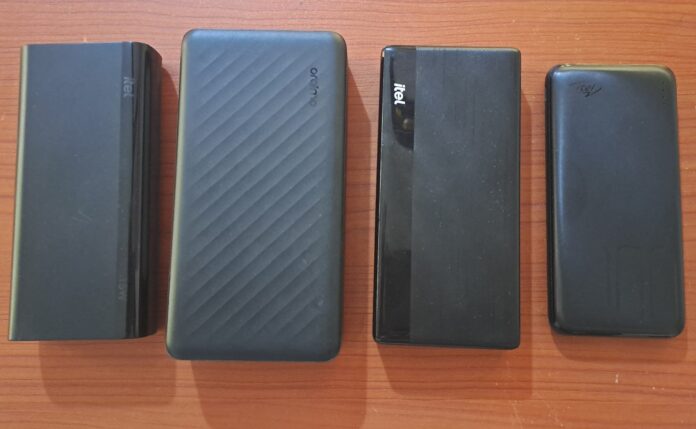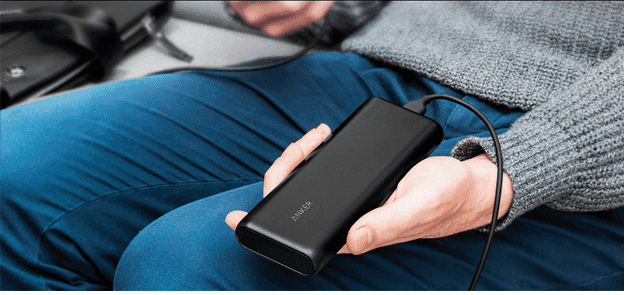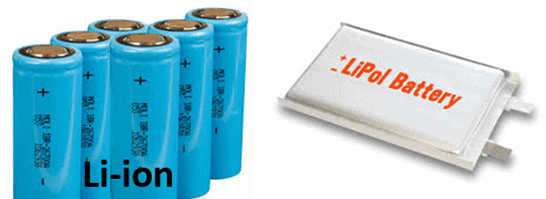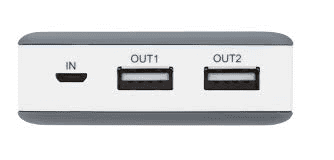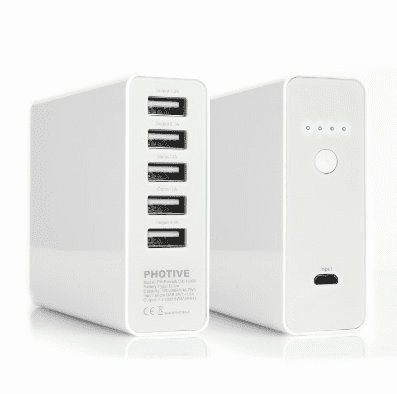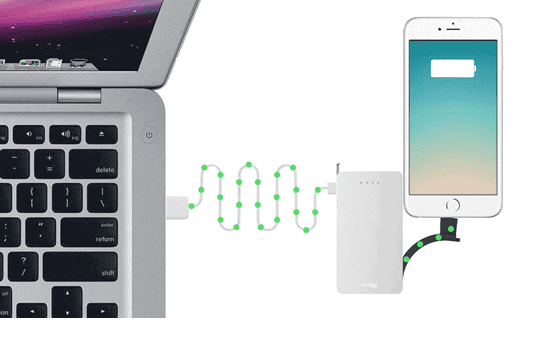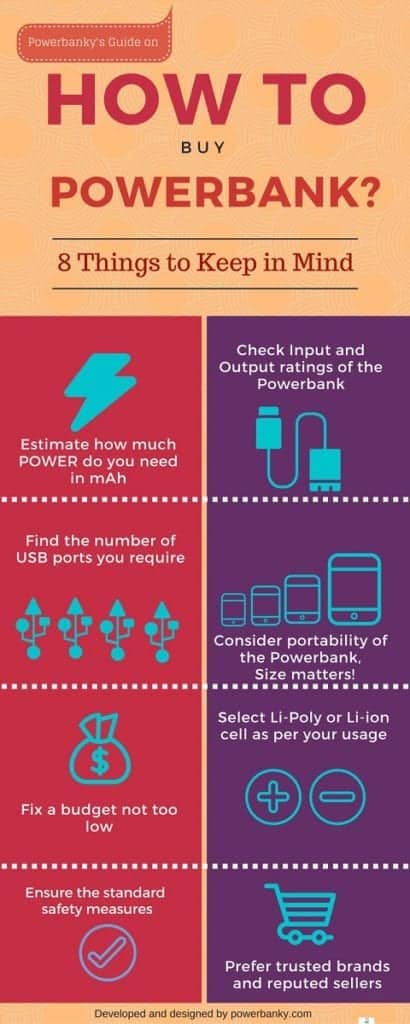Portable battery chargers, better known as Power Banks or Portable Chargers have become a great utility for smartphone users as they not only help to keep your devices charged up while on the go but also because they in spite of being handy and portable, can charge your smartphone and tablet multiple times depending on capacity.
However, do you know the basic features you need to keep in mind while going for a good portable battery charger? If not, then keep reading before grabbing one of the best power banks online.
This article will guide you on your key considerations when buying a power bank. Here are 6 things to look for when buying a power bank for your iPhone and Android phone as well as your tablet or iPad:
1. Power Bank Capacity
The capacity of a power bank is its primary feature, indicating how much electrical energy it can retain within itself and can utilize the same while charging your mobile devices.
The unit for measuring the electrical energy capacity of a portable charger is mAh. You might have come across figures like 5000 mAh for your smartphone. However, when it comes to portable chargers the minimum will recommend is 10000 mAh.
This ensures that the power bank can fully charge your phone at least once or twice for iPhones. Popular capacities for portable chargers include 10000 mAh, 20000 mAh, 27000 mAh, etc. They happen to be multiple small cylindrical Li-ion cells stacked together.
But before elaborating on what a Li-ion battery cell is, let me wrap the capacity section up by mentioning that though the common conception goes that bigger capacity power banks are better, yet, it is a mistake as those who say these forget that with capacity, the physical size of the portable charger also gets increased and so does the price.
So, go for the highest capacity that your budget allows. At the very least, the capacity of the power bank you buy should be large enough to fully charge your intended device at least once.
2. Li-ion or Li-Po
Li-ion and Li-polymer are nothing but two variations of the battery cells which are popularly used to constitute the best power banks. Most of the battery packs go for the Li-ion as they are cheaper but portable chargers constituted with Li-ion tend to become much bulkier in comparison to the Li-Po.
Not only Li-Po, being sleeker, can provide the provision to the manufacturers to manipulate the size and shape of the power banks further, but they are safer in terms of usage as well. A Li-Po Battery can also retain its charge longer.
3. Input and Output Current Rating
Input and output ratings imply how fast your power bank and the devices get charged. Typically, they come with a figure of 5V at 2.1 A and 5V at 1 A. Obviously, a 2.1 A rating would make the iPhone or Android phone charge faster.
However, for a 2.1A-rated power bank to get charged fast, you should also use a wall charger rated at least 2.1A as using a lower-rated charger like a 1A-rated wall charger will be counter-productive.
A few power banks offer faster charging with 5V, 3A (15W) or 9V, 2.2A (20W). Such portable chargers can recharge your phone from zero to about 50% in just 30 minutes depending on the capacity of the built-in battery.
Note the input and out rating of the power bank. A power bank that offers fast charging input and output ports will not only recharge fast but will also charge your devices fast.
4. Number of Ports
The number of ports on a Power Bank plays a vital role if you are going to have a need to charge multiple devices simultaneously. Usually most of the portable chargers below 10000 mAh capacity (smaller capacity) do not come up with multiple output port options. The reason is obvious; they are simply not large enough to charge up more than one device at a time.
By the way, it is important to know that the number of output ports of a power bank may affect output current when charging multiple devices at the same time. To get more clear about this, let’s take the example of the Mi 16000 mAh power bank, which comes with two USB output ports and claims to charge devices (smartphone or tablet) at 2.1 A at 5V.
However, this claim is only true when charging only one device at a time. When you use both ports at the same time, this particular power bank is capable of providing at max 3 A at 5 V (i.e. 1.5 A per port) instead of the otherwise presumed 4.2 A.
So, before picking one battery pack, especially if fast charging is a priority to you, this aspect should be taken care of scrupulously.
It is a good idea to go through a reliable power bank review about a certain portable charger to get to know more about the specifications for that particular power bank.
5. Types of Ports
You also need to consider the types of ports supported by the portable charger. If you are using an Android phone or Android tablet, you may not have much to worry about as most power banks in the market today offer support for USB ports.
The best power banks will offer USB Type C and a microUSB input port for recharging the power banks and one or two USB Type-A ports or/and a USB Type C port for charging your mobile devices.
Things get a bit tricky if you use an iPhone as you may not have a USB-compatible charger lying around since your iPhone probably uses the lightning connector. If you are buying a power bank for your iPhone consider one with a native lightning input port, so that you can charge the portable charger with the same charger you use for your phone. You will however need to buy a USB to Lightning adapter for charging your device.
6. Pass-through Charging
The last feature you might be seeking to make sure it is supported by your intended power bank is pass-through charging. At this point, you may be thinking what the heck is that?
It is simple, any power bank with pass pass-through charging feature would be able to power up itself (self-charge) and at the same time be charging your smartphone(s).
Normally this feature is supposed to be present in every power bank as it seems rudimentary, but guess what, some power banks miss this all-important feature. One power bank that offers this time-saving feature is the oraimo 27000 mAh power bank.
Wrapping up
Finally, in conclusion, one point is worth mentioning which is possibly the most crucial among all the above, which is the brand. Never ever get allured with the look of cheap Chinese or unbranded portable chargers as there have been many instances, where those power banks not only failed to charge the phone but also damaged the devices severely. So be careful while balancing between quality and price, when particularly it comes to a power bank.
How to Buy a Power Bank in Infographic
Here is an infographic to guide on buying a power bank:
This article was based on a guest contribution


